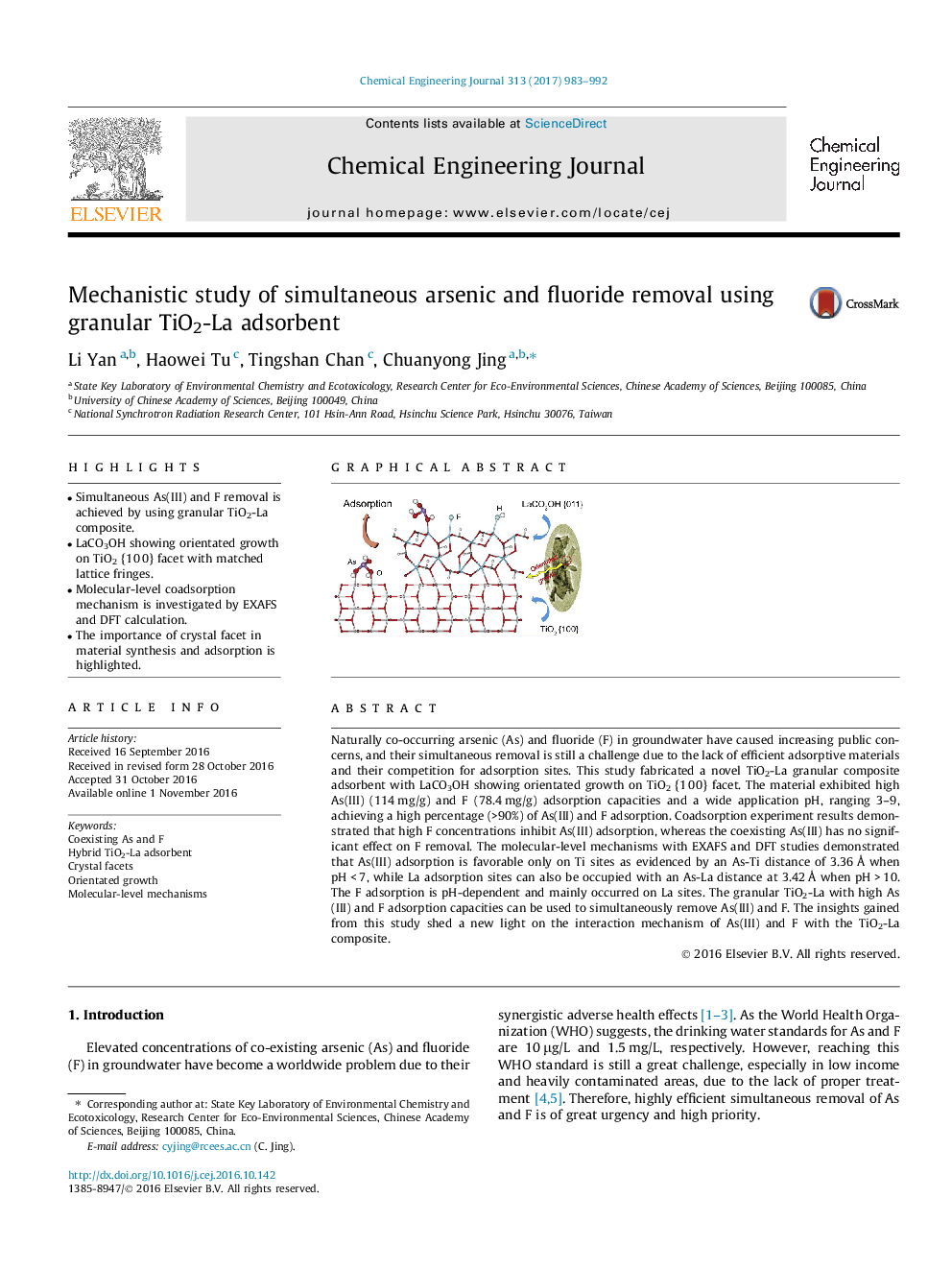| Article ID | Journal | Published Year | Pages | File Type |
|---|---|---|---|---|
| 6466645 | Chemical Engineering Journal | 2017 | 10 Pages |
â¢Simultaneous As(III) and F removal is achieved by using granular TiO2-La composite.â¢LaCO3OH showing orientated growth on TiO2 {1 0 0} facet with matched lattice fringes.â¢Molecular-level coadsorption mechanism is investigated by EXAFS and DFT calculation.â¢The importance of crystal facet in material synthesis and adsorption is highlighted.
Naturally co-occurring arsenic (As) and fluoride (F) in groundwater have caused increasing public concerns, and their simultaneous removal is still a challenge due to the lack of efficient adsorptive materials and their competition for adsorption sites. This study fabricated a novel TiO2-La granular composite adsorbent with LaCO3OH showing orientated growth on TiO2 {1Â 0Â 0} facet. The material exhibited high As(III) (114Â mg/g) and F (78.4Â mg/g) adsorption capacities and a wide application pH, ranging 3-9, achieving a high percentage (>90%) of As(III) and F adsorption. Coadsorption experiment results demonstrated that high F concentrations inhibit As(III) adsorption, whereas the coexisting As(III) has no significant effect on F removal. The molecular-level mechanisms with EXAFS and DFT studies demonstrated that As(III) adsorption is favorable only on Ti sites as evidenced by an As-Ti distance of 3.36Â Ã when pHÂ <Â 7, while La adsorption sites can also be occupied with an As-La distance at 3.42Â Ã when pHÂ >Â 10. The F adsorption is pH-dependent and mainly occurred on La sites. The granular TiO2-La with high As(III) and F adsorption capacities can be used to simultaneously remove As(III) and F. The insights gained from this study shed a new light on the interaction mechanism of As(III) and F with the TiO2-La composite.
Graphical abstractDownload high-res image (201KB)Download full-size image
